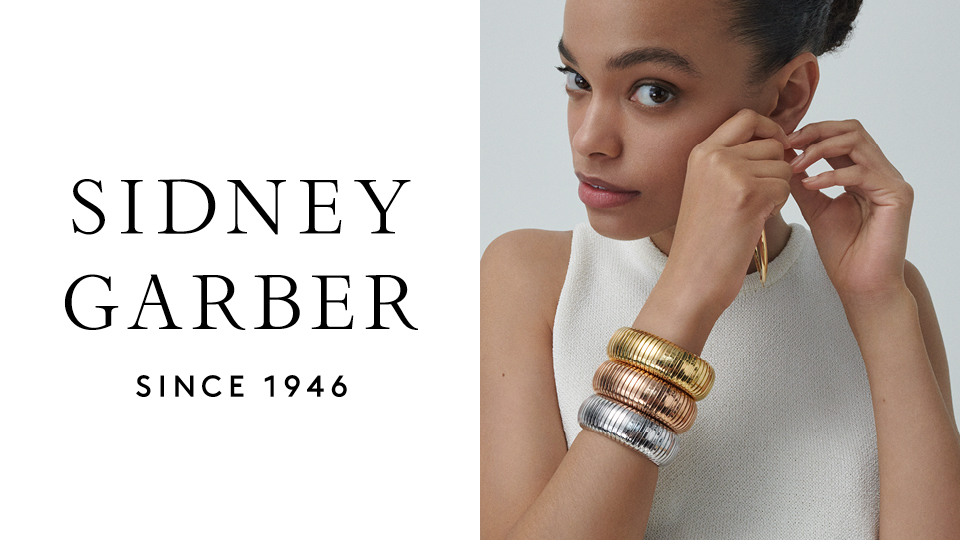 |
 |
|
Hi, welcome back to Line Sheet, the fashion industry’s No. 1 stop for unsanctioned corporate intel. There’s so much going on today, from the somewhat surprising news of Nike C.E.O. John Donahoe’s defenestration, to an incremental update on the YNAP situation, to details of the launch of Reformation designer Yael Aflalo’s new line, plus a whole lot in between.
Oh, and then there are the shows, of course! I’m having a great time in Milan so far. Are you? Shoot me a text via Line Sheet’s SMS channel, DM me on Instagram, or, you know, reply to this email. (It works! Really!) And thanks to everyone who came out today for our private, off-the-record call. These calls are only accessible to our Inner Circle, Puck’s top tier of membership that’s still very reasonably priced. (Less than your last Erewhon trip, probably, and healthier for you than Ozempic.) You also get access to the best baseball cap around and other very desirable merch. Join here.
🚨🚨 Programming note: Tomorrow on Fashion People, we’ve got Industry creators Konrad Kay and Mickey Down and Laura K. Smith, their costume designer for Season 3. I’ve been enjoying the show since the pilot, so this was very fun for me. We discuss how clothes inform certain character arcs, yes, but also get into the Pierpoint merch, Virgil Abloh’s fandom of the show, and how Lawrence Schlossman (Throwing Fits’ trendy king) became Larry. I hope all you Industry freaks enjoy it. By the way, the penultimate episode of the season airs September 22 on Max. (Or, if you’re one of those crazy people with cable, HBO.) Listen here or here.
Mentioned in this issue: Yael Aflalo, Reformation, John Donahoe, Mickey Drexler, Alex Mill, Chloë Sevigny, Milan Fashion Week, London Fashion Week, YNAP, Mytheresa, Luke and Lucie Meier, Tapestry vs. Lina Khan, Jil Sander, Phoebe Philo, Brunello Cucinelli, Tonne Goodman, Max Mara, Miuccia Prada, Raf Simons, and many more…
|
| Five Things You Should Know |
|
- Donahoe defenestrated!: Dang, that was fast. I guess being B.F.F.s with Phil Knight wasn’t enough to save Nike C.E.O. John Donahoe, who is “retiring” on October 13. Wow. You can read my piece from a few weeks back to get totally caught up, but the gist is that Donahoe, a career C.E.O., came in, made sweeping changes to the company’s culture and distribution model, then tried to walk back those changes. Alas, it was too little, too late. I’ll have more on this next week, but I’d say the biggest mistake Donahoe made was pulling out of stores like Zappos.com, thinking all those customers would migrate to Nike.com. It doesn’t work like that, and Donahoe was forced to resort to deep discounting—the sort of brand-dilutive hole that’s particularly hard to climb out of. Donahoe’s replacement is Elliott Hill, a 30-year Nike vet who left in 2020. I’ll gather more intel on Hill for you, but in the meantime, let me know what you think about this move. (The markets liked it: Nike shares jumped 8 percent on the news.) Good for Nike for not letting this drag out.
- What’s up with next season’s Fashion Month calendar?: New York Fashion Week will take place February 6 through 11, then London Fashion Week will start February 20, according to the Council of Fashion Designers of America. That means that there is a nine-day gap between the New York and London shows. This is great news for me and other people with young children. (I may actually be able to go to LFW!)
I reached out to the CFDA, the British Fashion Council, and the Fédération de la Haute Couture et de la Mode to see if they could explain the discrepancy. Turns out it’s a practical matter for the Europeans. Every six or seven years, the councils push the calendar back one week because the dates start creeping up. (Fashion runs on a very strict production schedule, and the earlier you show, the harder it is to get samples made.) While the CFDA wanted to follow suit, they don’t want their shows to overlap with President’s Day. (Also, everyone gets Valentine’s Day off for once. Now’s your chance to go out for an overpriced, tacky dinner!)
I think this will encourage more out-of-towners to fly to New York for the shows, but the European shows will overlap with the Oscars on Sunday, March 2. At the big brands, the teams that manage the shows are different from the teams that manage the red carpet, but this overlap will definitely be a headache for creative directors who are actually involved in creating the looks, or for those who typically host events around the Academy Awards. Meanwhile, should we do a Line Sheet Oscars watch party over here in Europe?
- YNAP + Mytheresa = dream, reality, or nightmare?: The word on the pavé streets here in Milano is that a Mytheresa and Yoox Net-a-Porter Group partnership could at last be on the horizon, but that Richemont is still working on unwinding YNAP from the group. If Mytheresa is the final destination for YNAP, there would also have to be a recapitalization. Regardless, there will be a conclusion to this YNAP mess one way or another. I hope for all involved that it is soon!
Nobody but me wanted to discuss this topic at the Mytheresa party at Bar Basso on Wednesday night. (Luckily, plenty of people who weren’t invited were game to discuss.) I also missed an opportunity to bother Stone Island’s Robert Triefus, one of my faves, but he slunk out before I could pounce!
- Does Alex Mill need an investor other than Mickey Drexler?: It feels like many of the brands that went gangbusters during the pandemic are tapped out, but those that rose more steadily, and are more driven by looking unique, are gaining traction. At the high end, that means Alaïa, Chloé, Loewe, Bally, etcetera. But it’s true in the middle, too. Alex Mill, for instance, has seen its revenue rise 50 percent year over year, I’m told, and the business is on track to do something like $40 million in sales in 2024.
Alex Mill is small, but remember that brands like A.P.C. hovered in the $50 million range for ages. However, it seems that chairman Mickey Drexler may be itching to scale just a tad more quickly on the retail front. (Remember, he’s used to building businesses within the infrastructure of a larger organization, where vast retail networks allow for quick store expansion and long credit lines allow for bigger inventory bets.)
Drexler is the sole investor in Alex Mill, which started out as a line of shirting created by his son, Alexander Drexler, then morphed into a full-fledged brand after Mickey’s J.Crew non-compete ran out and they hired designer Somsack Sikhounmuong. From what I hear, the elder Drexler is open, for the first time, to the idea of a financial partner. As long as he can maintain control, of course. He could probably raise the commitments with a few phone calls.
- By the way: Yesterday, you received a note about participating in The Puck Private Conversation, a whole new big fun thing we’re doing. Basically, we want your unvarnished opinion about everything from who you think will win the U.S. election in November (or who you want to win) to what brands you’re buying (at retail, people). This is yet another way for us to interact directly, which is the name of the game here. More soon, but until then, make sure to fill out this survey.
|
|
|
| Notes on the Milan Shows, From Jil Sander to Prada |
|
| It is on in Milan. Brands are for sale, business is soft, and there is a real feeling in the air of now-or-never. I arrived on Wednesday morning, caffeinated myself, and promptly headed northwest to Jil Sander, where creative directors Luke and Lucie Meier turned out an aggressive, charged collection. Typically, their silhouette is very rounded, almost bulbous, and while they didn’t lose that entirely, this was much more angled, with pointed-collar shirts, elongated suiting, and triangle-toe cowboy boots. I liked it, and was glad they suppressed the urge to be pretty and embraced the more masculine side of their aesthetic. (Which, no way around it, owes a lot to Phoebe Philo—in all her iterations.) Anyway, it appears they figured out where their customer wants to go, or has already gone.
Yesterday was mostly about great commercial brands. Blazé Milano, with its signature curved-hem pocket on every blazer, has such an easy and universal flair. It looks as good in Los Angeles as it does in Milan or Florence. At Brunello Cucinelli’s always-packed presentation (which often doubles as lunch… for those of us who still eat), it’s less about ogling the clothes and more about paying respect to Mr. Cucinelli, who makes himself readily available to the loyal press. That said, I thought they paid more attention this season to feeling current. Especially in the way the pieces were styled, like the grapefruit-red cotton set that looked like wispy handkerchiefs tied up on the model.
You know who’s the best at modernizing classic pieces? Tonne Goodman, who once again absolutely nailed it with Max Mara, where she’s been styling the collection for the past few seasons. She makes a white shirt look sensational; I’m not sure anyone could get the sleeve peeking out of the jacket as precisely as she does, but it’s worth a try. (And is certainly a way to pique a new-generation consumer’s interest.)
It’s crazy that Jil Sander and Prada used to be owned by the same person. These days, though, Prada’s perfect balance of art and commerce explains why the group, which also includes Miu Miu, is obliterating the competition. I felt an aggressiveness in this collection, like they weren’t holding anything back, making every look different from the other. Backstage, I asked Miuccia Prada if she was ticked off, or annoyed, about something. (Perhaps that was too direct an interpretation.) She and partner Raf Simons conveyed that they were, in a way, attempting to analyze the flood of information we ingest every day. A “human” reaction to the overload of imagery, to the sameness of what we all take in, by making each look truly individual. That’s heavy, but the clothes weren’t. I loved the leather hoodies. Especially the magenta one.
|
 |
| Yael Drama School |
| Four years after her Reformation exit, serial entrepreneur and designer Yael Aflalo is back with her new brand—and some theories about the future of luxury, D.T.C., wholesale, and more. |
|
|
|
| I’ve always found Yael Aflalo to be an unusually compelling character, even by American fashion’s standards. Her parents were jobbers on the “Canal Street of Los Angeles,” down in the city’s dingy, soot-covered garment center. Aflalo took that garmento knowledge and, while in her 20s, started Ya-Ya, a cool-girl contemporary brand that was sold at department stores.
Disillusioned by the impossible math of the wholesale model, she started Reformation in 2009. Aflalo made deadstock vintage cashmere sweaters the base of that new, direct-to-consumer label, which quickly morphed into a fast-fashion alternative for those seeking responsibly produced clothes that were slightly slutty with both a sense of humor and a level of sophistication—you know, a hipbone-high slit dress that was somehow okay to wear to a wedding. Aflalo ran Reformation efficiently for years, avoiding down rounds and a too-crowded cap table, only to sell a majority stake to Permira in 2019. (Somehow, the valuation never got out.) She retained a stake, but in 2020, at the height of the Great Pandemic Mass Cancellation, she stepped down from her C.E.O. role amid accusations of racism that were shortly dismissed by a third-party investigator.
|
|
|
| I covered her exit pretty closely, and the whole thing was so awful and unnecessary for everyone involved—the worst of what that era wrought. At the same time, Aflalo was lucky that the Reformation board backed her up. “A lot of boards weren’t very nice in that era,” she recently told me. The truth, as I’ve written before, was that Aflalo would have likely left after her contract was up anyway. She made a significant amount of money in the Permira deal, and (current Reformation C.E.O.) Hali Borenstein was waiting in the wings. They are still close, and Aflalo also remains a shareholder and board member.
People like Aflalo don’t retire. First, she tried her hand at investing full-time, launching Daughters Capital, a fund focused on female-founded businesses. “I didn’t want to do fashion again,” she said. And yet, here we are, mid-September 2024, more than four years after she left Ref, and Aflalo is self-financing her latest business, Aflalo, which launched today.
|
|
|
| Aflalo, the label, is what people call entry-designer—expensive, but not appalling. Sweaters are between $400 and $1,300; outerwear is $900-$4,000. Trousers are $500-$800. Almost everything is made in Italy or New York, save for some knitwear in China. And yes, it’s full-blown D.T.C.: The only place where you can buy it is AflaloNYC.com, and there are already proposals for a physical location, slated for the first quarter of 2025 if the company hits its targets.
The near instantaneous success of Aflalo’s first company, Ya-Ya, resulted from her childhood proximity to the fashion business—she inherently understood more than most operators ever do. Reformation was successful because she addressed the fashion system’s faults: eroding margins, cheap fabrics, irresponsible production. This time, she’s taking on designer goods, which she says “tend to be more extreme in their looks. They operate on very polarized ends of a spectrum.”
|
|
|
| In our conversation, Aflalo emphasized the word “flattering,” which has fallen away in the vernacular, alongside “nude” and “slimming,” when describing her clothing. The reality, of course, is that most people do want to wear clothes that make them look good, and most clothes do not make them look good. “They’re either too androgynous, or too revealing, or very feminine, and not as focused on fit for a healthy, normal-sized body,” she said.
The likelihood that Aflalo will nail the design is pretty high. At first glance, I’d posit that they are hot-girl clothes for everyone. The tagline for the email sign-up sets the tone: “Updates on the sublime, the practical, and the occasional nipple indiscretion.” She’s a creative merchant, with a knack for sniffing out exactly what people want to wear at that moment in time. But she also has extraordinary business discipline. For instance, she’s felt the sticker shock around product development in luxury, which has required her to “rein it in” and create a tighter edit than she was used to at Reformation.
She’s also set on building a less bloated, more focussed supply chain in the hopes of delivering more value to the end user. What hasn’t changed is her belief that direct-to-consumer beats multibrand, even as the pendulum has swung back to wholesale in recent years. “People just get hyped around certain concepts,” she said. “Wholesale is easy to start, while the first year or two of D.T.C. is pretty painful. It’s very hard, and capital intensive. But then it gets easier in a year or two. And anyway, I like doing hard things.”
|
|
|
| I was just talking to a designer friend who expressed their desire for Phoebe Philo to do more cool celebrity placements. This red-carpet moment with Chloë Sevigny—the first red carpet moment for PP, I believe—is very on point. But just so you know, PP doesn’t have a formal red carpet program, which I am sure does not surprise you. My understanding is that Sevigny requested the look, and they obliged, because she is the best. [Harper’s Bazaar]
The Tapestry vs. Lina Khan battle may seem silly and comical to us, but honestly, if Tapestry isn’t able to overrule the Federal Trade Commission’s attempt to block its merger with Capri, it’s going to be annoying for everyone. (Meaning, all of you fashion people.) This was a great depiction of the trial, and gave some insights into the business via C.E.O. Joanne C. Crevoiserat and Michael Kors, the designer, who was very honest about the state of his biz. [The Financial Times]
Dylan’s email yesterday was really good if you are interested in the future of media, M&A, etcetera. Also, I couldn’t have written a better analysis of the Air Mail news, myself. [In the Room]
Caroline Rush says “Peace out” to the British Fashion Council. [WWD]
Feels so long ago now, but I liked Vanessa Friedman’s write-up of London Fashion Week. [New York Times]
Speaking of Vanessa, a reader recently asked her why so many people wear black these days. One thing she didn’t mention: Wearing black makes you look skinnier, which is undeniably one of the reasons. [New York Times]
Jane Herman asked 18 fashion editors for their denim picks for fall. [Jane on Jeans]
Sarah Kent dug into why, actually, there are so many Italian sweatshops. [BoF]
R.I.P. M&J Trimming! [Curbed]
|
|
|
| And finally… How much does everyone love to see New York magazine editor-in-chief David Haskell at the shows? A lot.
Until next week,
Lauren
|
|
|
|
| FOUR STORIES WE’RE TALKING ABOUT |
|
|
|
|
|
 |
|
|
|
Need help? Review our FAQs
page or contact
us for assistance. For brand partnerships, email ads@puck.news.
|
|
You received this email because you signed up to receive emails from Puck, or as part of your Puck account associated with . To stop receiving this newsletter and/or manage all your email preferences, click here.
|
|
Puck is published by Heat Media LLC. 227 W 17th St New York, NY 10011.
|
|
|
|











